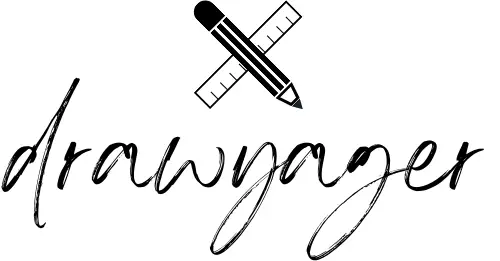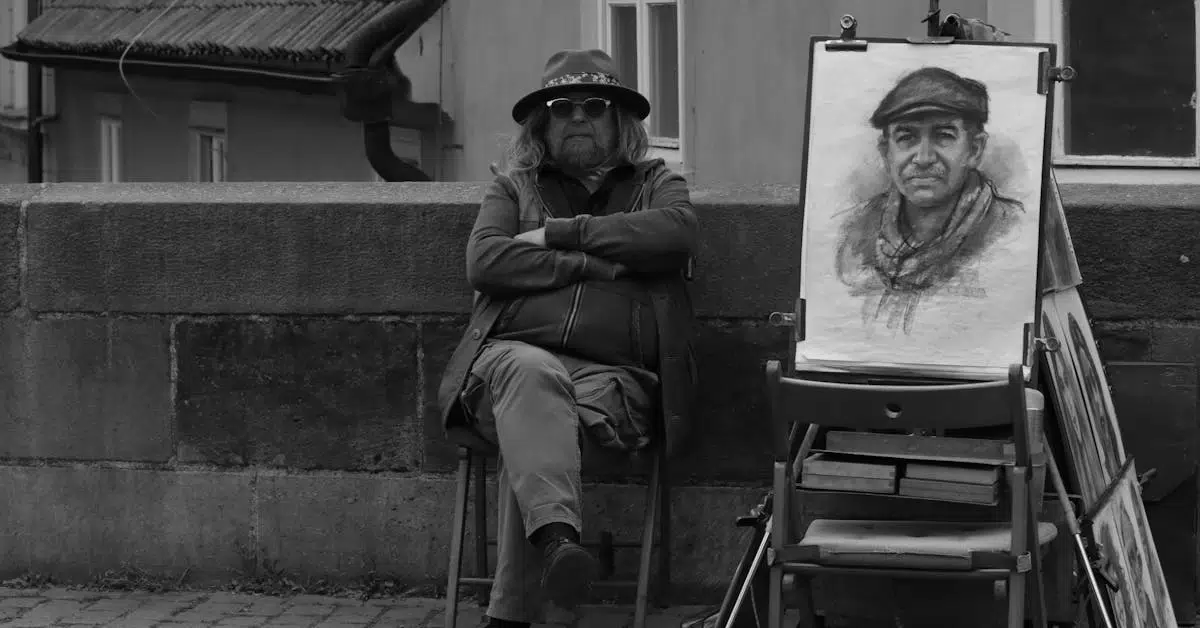Ever tried drawing something and felt it just doesn’t look real? You’re not alone. Realistic drawings may seem tricky, but they’re doable with the right tips and a bit (or a lot) of practice. Whether you’re a beginner or looking to level up your sketching game, this guide will help you create drawings that feel like they could jump off the page.
In this article, you’ll discover what makes a drawing realistic, step-by-step guides for different subjects, and practical tips to improve your art skills, one sketch at a time.
What Are Realistic Drawings?
Realistic drawings are artworks that closely resemble real life. They often include careful shading, details, and correct proportions. Artists use different techniques to make things like people, animals, or objects look three-dimensional on paper.
Why Learn to Draw Realistically?
- It improves your overall drawing skills
- You learn to see and observe better
- It’s rewarding to make something that looks real
- Great foundation for styles like portrait drawing or hyperrealism

Realistic Drawing Tips for Beginners
Realistic drawing can feel challenging, but it gets easier with a few smart habits. These beginner tips will help you build a solid foundation:
- Take your time — Realistic drawing isn’t a race. Focus on slow, careful work rather than rushing to finish.
- Use light pencil strokes — Start with soft lines so you can make changes easily. It helps build shapes gradually without smudging.
- Train your eye to see better — Before you draw, spend a minute observing your subject. Look at how light falls, where shadows appear, and how edges blend.
- Break complex things into shapes — Even a face can start as simple ovals and rectangles. Work from large shapes to small details.
- Start with simple subjects — Don’t jump into full portraits on day one. Try drawing a single eye or a lemon first.
- Use references often — Photos or real-life objects help you understand form and lighting.
- Practice shading techniques — Try hatching (lines), cross-hatching (crisscrossed lines), and smooth blending with a finger or blending stump.
- Keep your pencils sharp — A fine point helps you draw details better and more clearly.
- Use an eraser as a drawing tool — Don’t just erase mistakes—use it to add highlights by gently lifting off graphite.
- Stay patient and positive — Progress can be slow at first. Celebrate small wins and keep going!
Step-by-Step Ideas to Practice Realistic Drawings

These practice exercises help you build skills by focusing on one subject at a time. The more you repeat each type, the more natural your realistic drawing will become.
1. Realistic Eye Drawing
Eyes are expressive and a great place to start. Begin by sketching the basic almond shape. Add the iris and pupil, then pay close attention to the reflections. Use soft shading around the eyelid and below the eye to create depth. Keep your lines light and gradually build contrast to make it feel real. Eyes are expressive and a great place to start. Focus on the shape of the eyelids, the reflection in the pupil, and soft eyelashes. Use gentle shading to show depth.
2. Drawing a Realistic Nose
Start by marking the top and bottom of the nose lightly. Draw simple shapes for the nostrils and bridge. Instead of outlining the nose, build the shape through shading and soft transitions. Highlight the area where the light hits, and keep shadows smooth to show the curve of the nose. Start with light lines to mark the bridge and nostrils. Shade softly around the nose rather than drawing bold outlines.
3. Sketching Hands
Break down the hand into a palm (box shape) and fingers (cylinders). Use your hand or a reference photo. Start with basic lines for structure, then add volume using light and shadow. Hands have many tiny details, so don’t rush. Practice different hand poses to build confidence. Break the hand into shapes—palms as boxes, fingers as cylinders. Use reference photos and pay attention to how light hits the hand.
4. Realistic Animal Drawings
Choose an animal with interesting features, like a dog, cat, or bird. Focus on capturing proportions and natural posture first. Then zoom in on the eyes, fur, or feathers. Use small pencil strokes to mimic texture. Adding contrast to the eyes often brings the whole animal to life. Choose a pet or favorite animal. Focus on fur texture, eye shine, and natural proportions.
5. Still Life Drawing
Arrange a few simple objects like a cup, an apple, and a spoon. Look closely at how light falls on each one. Draw their outlines softly, then shade based on the darkest and lightest areas. Use cross-hatching or smooth blending to add volume. Practice changing the light source to see different shadows. Arrange objects like a mug, an apple, and a book. Study their shadows, textures, and how they sit in space.
6. Drawing Realistic Hair
Start by identifying the hair flow. Use long, soft strokes in the direction the hair moves. Avoid drawing individual strands at first. Instead, block out the light and dark areas, then layer finer strokes on top. Highlights and shadows are key to making hair feel natural. Use many small strokes to follow the direction of the hair. Blend lightly to avoid harsh lines.
If you want, you can take a look at Drawing Hairstyles Ideas: Inspiration for Sketching Trendy Hairdos 2024
7. Portrait Drawing
Start with a light grid to place the eyes, nose, and mouth in the correct position. Measure features using your pencil or fingers. Focus on symmetry and proportion. Shade gradually, especially around the eyes, cheekbones, and lips. Don’t forget soft transitions, faces have few hard edges. Start with a simple grid to place the facial features. Don’t rush, measure and compare often.
8. Realistic Nature Drawing
Use real leaves, flowers, or pinecones as a reference. Look at the lines, curves, and patterns in detail. Draw lightly, then layer texture with pencil pressure or hatching. Capture the play of light across smooth petals or rough bark. Try zooming in on just one part of a plant for better results. Try leaves, flowers, or trees. Focus on the fine lines in petals or veins in a leaf.
9. Realistic Lips
Start with two curved lines for the top and bottom lips. Observe the soft shadows at the corners and beneath the bottom lip. Add subtle texture for skin and gentle highlights where light hits. Lips are full of curves—focus on smooth shading, not hard lines. Draw the shape, then add a soft shadow under the lower lip and light at the top for shine.
10. Textured Object Drawing
Pick a material—like wood, glass, or cloth—and examine its surface. Wood may need grain lines; glass needs clear highlights and reflections. Cloth needs folds and soft transitions. Try layering light tones and varying your pencil pressure to create realistic texture. Practice with items like wood grain, glass, or fabric folds. Use cross-hatching or soft blending to mimic textures.
Personal Tips to Boost Your Realism
- Keep a sketchbook just for realism practice
- Study from real life, not just photos. Maybe you can enroll in an art class or get a friend to model for you. Or buy an interesting mug at the thrift shop
- Try drawing upside-down to focus on shapes, not meaning
- Practice value scales to understand light and dark
Long-Term Plan to Improve Your Realistic Drawing Skills
If you want to improve over several months, here’s a sample guide to help you stay focused and grow your skills:
Month 1: Focus on Observation
- Practice drawing from life 10–15 minutes a day
- Draw simple objects: cups, fruit, or tools
- Study light and shadow using one desk lamp
- Practice shading exercises (value scales, spheres)
Month 2: Study Features and Proportions
- Draw facial features: eyes, noses, mouths, ears (1 per week)
- Use reference photos to check accuracy
- Learn basic facial proportions
- Practice one portrait from a photo per week

Month 3: Build Realism Through Shading
- Focus on hair, fabric, and natural textures
- Use layering, blending, and erasing for realism
- Draw simple still lifes with three objects
- Begin drawing one full portrait or animal weekly
Month 4: Combine Skills in Full Compositions
- Try portraits with hands or props
- Create a nature study: an animal with plants
- Challenge yourself with reflective objects (glass, metal)
- Draw one complex image each week
Month 5 and Beyond: Refine and Experiment
- Explore new tools (charcoal, colored pencil)
- Redraw earlier sketches to compare progress
- Start creating original compositions from life
- Mix realism with other styles (surreal, stylized)
Track your progress in a sketchbook, and don’t forget to date your work. Improvement happens when you practice mindfully and regularly.
FAQ: Realistic Drawings
How long does it take to learn realistic drawing?
It depends on how often you practice. Many artists see big progress within a few months of consistent sketching.
Do I need fancy tools to draw realistically?
Nope! A regular pencil, eraser, and paper are enough to start. Shading tools like blending stumps help, but aren’t required.
What’s the best subject for realistic drawing beginners?
Try simple things like fruit, eyes, or a hand. Avoid complex faces or full scenes at the beginning.
Ready to Bring Your Drawings to Life?
Now that you know how to create realistic drawings, it’s time to pick up your pencil and try! Practice a little every day, and you’ll be surprised how fast your skills grow. Follow me on Pinterest for more realistic drawing references, check out my other art guides, or drop your questions and work in the comments below.






